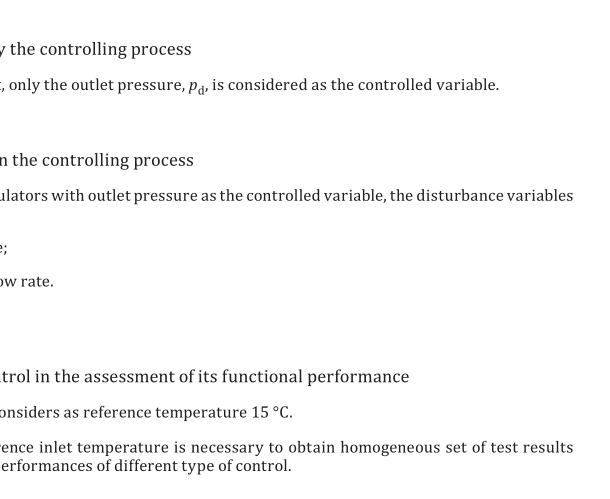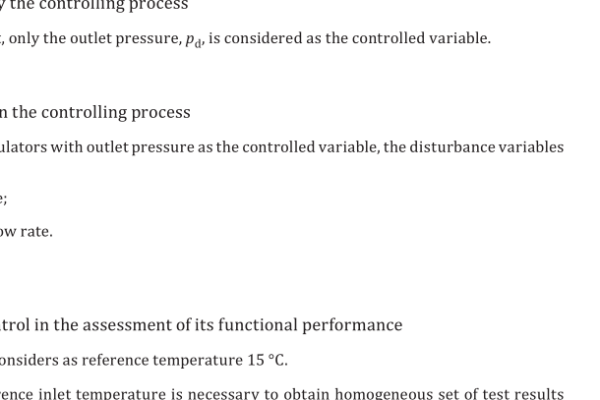ISO 23555-2:2022 pdf download – Gas pressure safety and control devices for use in gas transmission, distribution and installations for inlet pressures up to and including 10 MPa — Part 2: Gas pressure regulator.
6.7.1 General Subclause specific to this document. The main function of a regulator is to maintain the value of the controlled variable within its tolerance field irrespective of the disturbance variables. Regulators shall not have any continuous discharge of gas into the atmosphere. However, temporary discharges from auxiliary devices can occur. Regulators shall be so designed that the external tightness and internal sealing meet the requirements of 7.2.4 and 7.2.5. If in the event of failure of the regulator (e.g. failure of a diaphragm) leakage to atmosphere is possible, the breather shall be provided with a threaded connection of at least DN 10 to enable an exhaust line to be connected. This connection may be used for a specific device (e.g. a dumping device). For proper operation of the regulator, any exhaust line shall be designed in such a way to prevent the ingress of foreign materials. Pressure bearing parts including measuring and test points, which may be dismantled for servicing, adjustment or conversion shall be made pressure tight by mechanical means (e.g. metal to metal joints, o-rings, gaskets, etc.). Jointing compounds, such as liquids and pastes, shall not be used. Jointing compounds, however, may be used for permanent assemblies and shall remain effective under normal operating conditions. Pressure bearing parts not intended to be dismantled during servicing, adjustment or conversion shall be sealed by means which show evidence of interference or tampering (e.g. lacquer). When external protrusions or other external parts need special care to cover the hazards during transport and handling, the manual shall include the provisions to cover these risks. The motorization energy in a pilot-controlled regulator shall be provided by the gas upstream of the regulator. For regulators used as stand-by monitor, it shall be possible to check whether the control member is in fully open or in controlling position by a visual inspection.
b) the function of the safety shut-off device/monitor is not affected in the event of the failure and/or loss of functionality of one or more of the following regulator components: — control member; — seat ring; — actuator; — casing of actuator; — controller; — pilot (in case of pilot-controlled regulator type); — sensing and process lines. When the regulator incorporates more than one safety devices (e.g. a monitor and an SSD or two SSDs), the functional independence shall be met by each device from the other ones in similar way as detailed in this subclause. When the integrated safety device is a slam-shut device or a cut-off device or a monitor, the motorization energy for the regulator, when it is a pilot-controlled type, shall be provided by the gas downstream of the safety device.
ISO 23555-2:2022 pdf download – Gas pressure safety and control devices for use in gas transmission, distribution and installations for inlet pressures up to and including 10 MPa — Part 2: Gas pressure regulator






